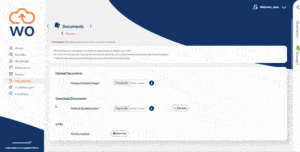Onboarding is one area where ‘ghosts’ really do exist. And there’s a good chance there’s at least one currently floating around your organisation’s HR and hiring processes. .
We’re not not talking about spooky spectres but those ‘ghosts in the machine’ that lurk within the data collected by HR and hiring teams. These are personal details relating to people with no active connection to the organisation.
A typical cause of this is ‘non-boarding’ – this is when a successful candidate fails to complete the hiring process. This often happens as a result of juggling multiple employment options.
Having started collecting personal data during the onboarding process, their information is liable to remain in limbo after they have dropped out.
Employee onboarding refers to the process of integrating a new hire into the organisation, from offer to day one and the documentation and tasks required to do this. . This can include everything from contracts, offer letters, policy guides and first-day itineraries.
Growing problem of ‘ghosting’
The practice of ‘ghosting’ is a growing problem during onboarding. This is when sucessful candidates fail to inform the HR department of their decision to exit the process. Instead, they simply stop responding to communications.
The more new hires that are being handled, the more of a challenge it becomes to keep track of each individual’s status. The longer it takes to identify a ‘ghost’, the more HR resources are wasted.
Without an efficient onboarding system and robust data management, this kind of outdated personal data can remain within an organisation indefinitely. It may be stored in the form of paper docs, emails or spreadsheet entries.
Storing this kind of legacy information isn’t just inefficient, it poses a significant compliance risk. In particular, it potentially breaches the GDPR (General Data Protection Regulation) laws recently introduced by the European Union.
Compliance risks of legacy data
The GDPR ‘storage limitation’ guidelines emphasise the need to remove any data that’s no longer ‘necessary’ or ‘relevant’. This applies to all instances of data – whether it’s a shared email or a paper doc in a filing cabinet.
The practice of ‘ghosting’ has been linked to the changing ways people communicate in a digitally connected world. With less focus on face-to-face meetings, people are able to avoid potentially awkward interactions.
But while technology may be the cause, it’s also providing hiring teams with the tools they need to go ‘ghost’ hunting. Systems such as webonboarding allow real-time tracking of the hiring process.
With all onboarding information handled via an online portal, it allows the status of each new hire to be constantly tracked. If an onboardee fails to complete a required task, it’s instantly known about.
Smarter management of employee info
The cloud-based nature of the system also allows data to be automatically collated, helping to guard against the dangers of fragmented and duplicate information. If the onboarding process isn’t completed, the corresponding employee data can be safely removed.
It provides HR with a level of control over employee data that’s not possible when processes are being handled manually, via a combination of paperwork, phone calls and emails.
So while these ‘ghosts’ may not go bump in the night, they can pose a seriously scary problem for HR managers. Especially as the potential penalties for GDPR compliance breaches are fines of up to €20 million.




